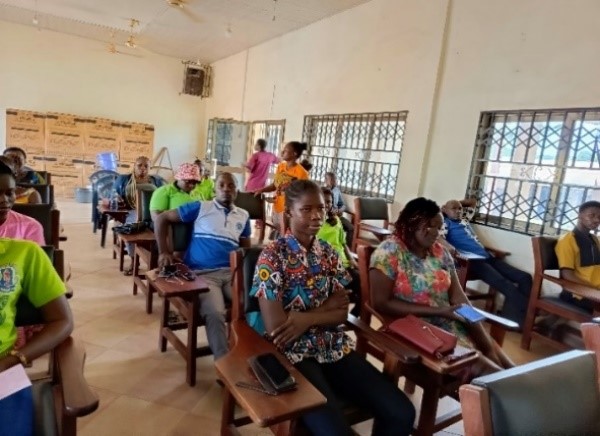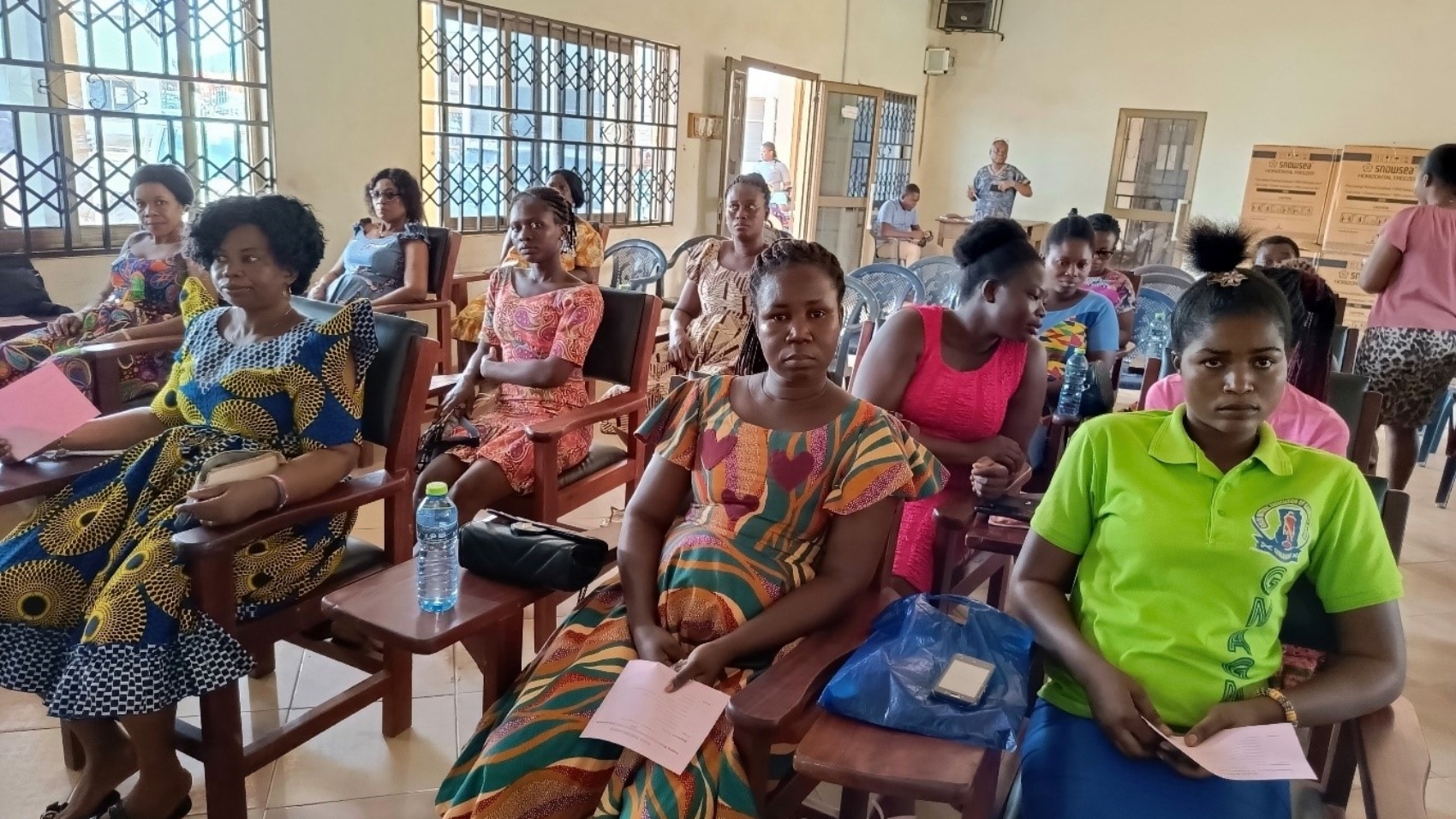Available statistics indicate that the primary economic activities in Hohoe Municipality are agriculture, forestry, fisheries, wholesale and retail trade, and manufacturing, which collectively employ 70% of the local population.
However, Small and Medium Enterprises (SMEs) in the area are increasingly threatened by climate change. These threats could lead to business failures and exacerbate local poverty if left unaddressed.
In response, the HATOF Foundation conducted a training workshop on August 14 and 15, 2024, for SMEs in Hohoe Municipality, focusing on how to adapt to the impacts of climate change. This initiative aimed to enhance the skills of local business owners to mitigate the risks posed by climate change effectively.
The workshop attracted over fifty participants from various sectors, including beauty, fashion design, hospitality, and small-scale trading. Attendees learned about climate change, its causes, effects, and implications for their businesses.
The facilitator, Ms. MaryJane Enchill, also outlined three types of climate-related risks: physical risks (such as floods, droughts, and wildfires), transition risks (increased costs due to climate regulations), and liability risks (stemming from non-compliance with evolving legal standards).
Despite the challenges presented by climate change, it was emphasized that there are also opportunities for SMEs. Sectors like agribusiness, retail, food and beverage, and handmade products can leverage climate change to create new business growth, generate jobs, and stimulate economic revitalization.
The workshop concluded with the recognition that every business faces some physical, transitional, or liability risk.
While regulatory concerns may affect some, the potential for asset loss due to physical threats is significant.
SMEs are encouraged to incorporate climate risk considerations into their business plans, conduct regular impact assessments, and collaborate with insurers and local governments to manage these risks effectively.


